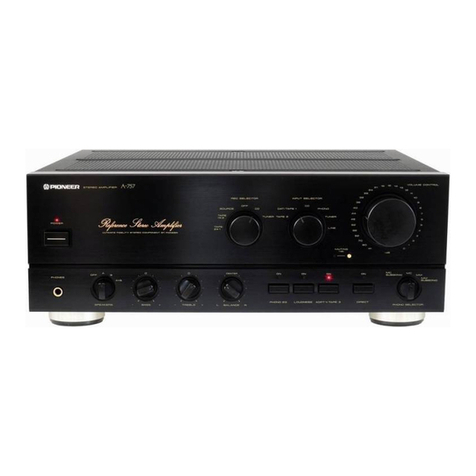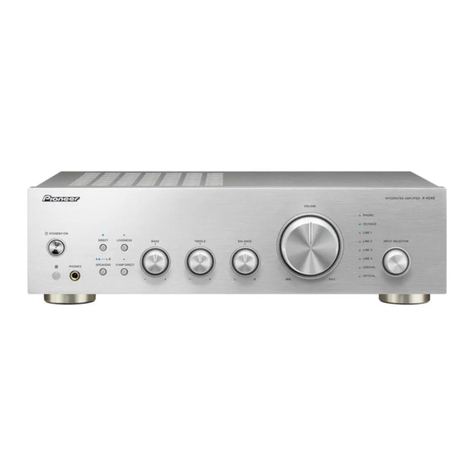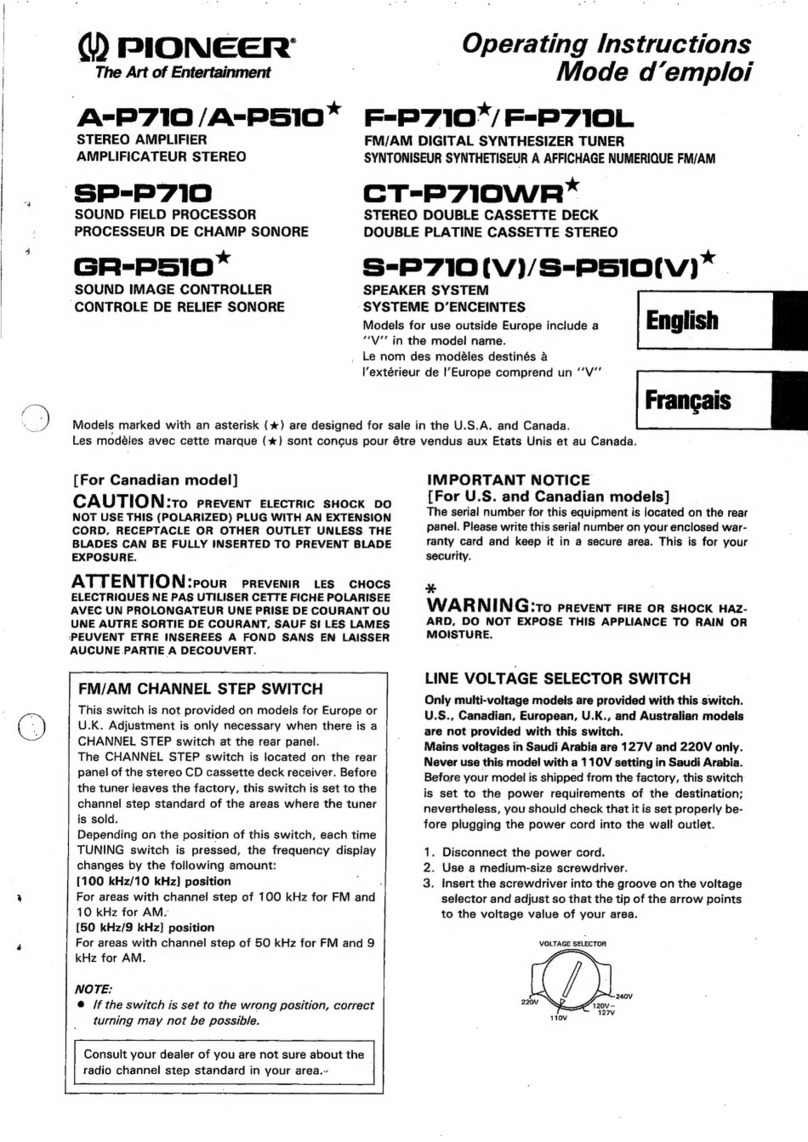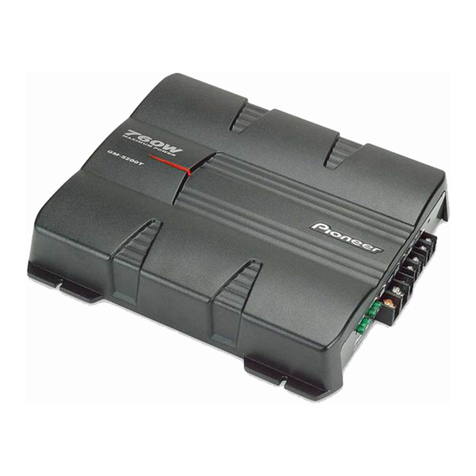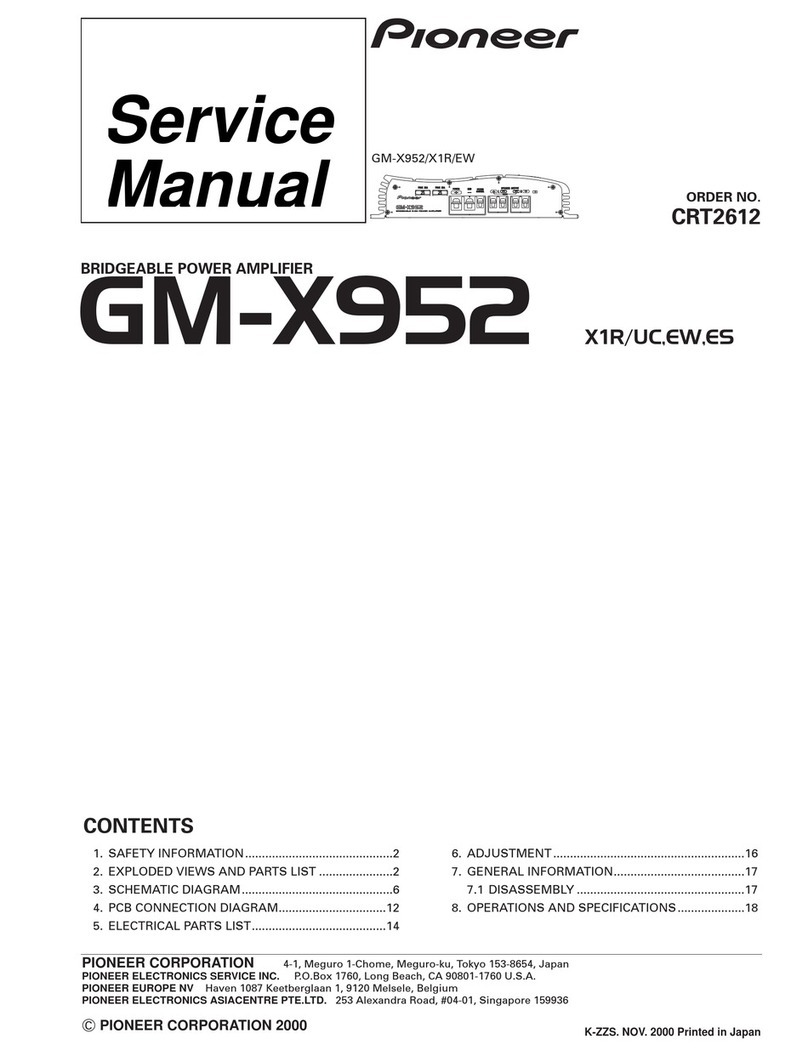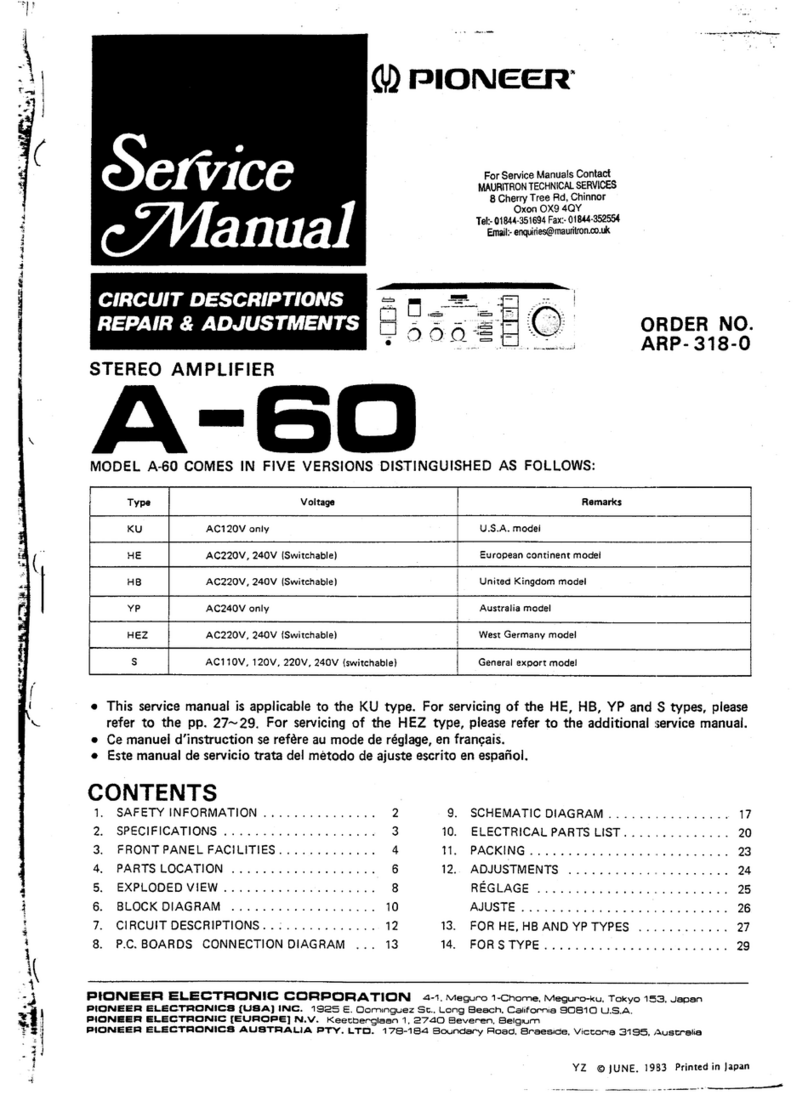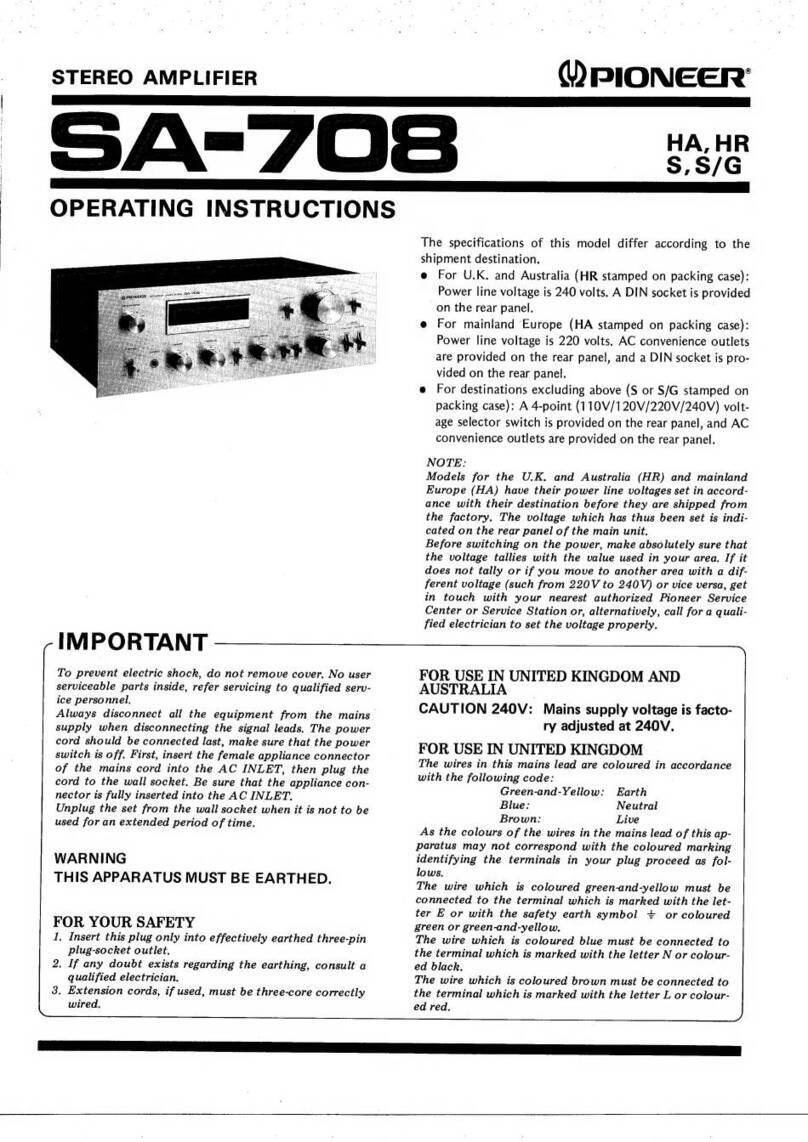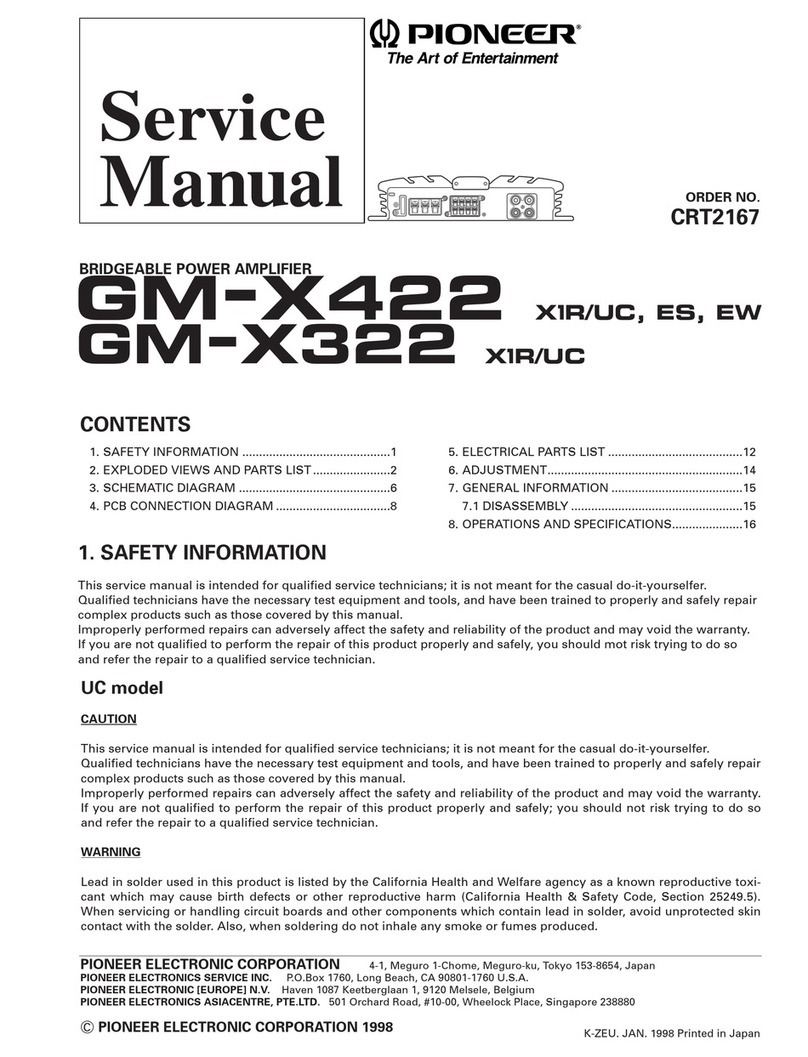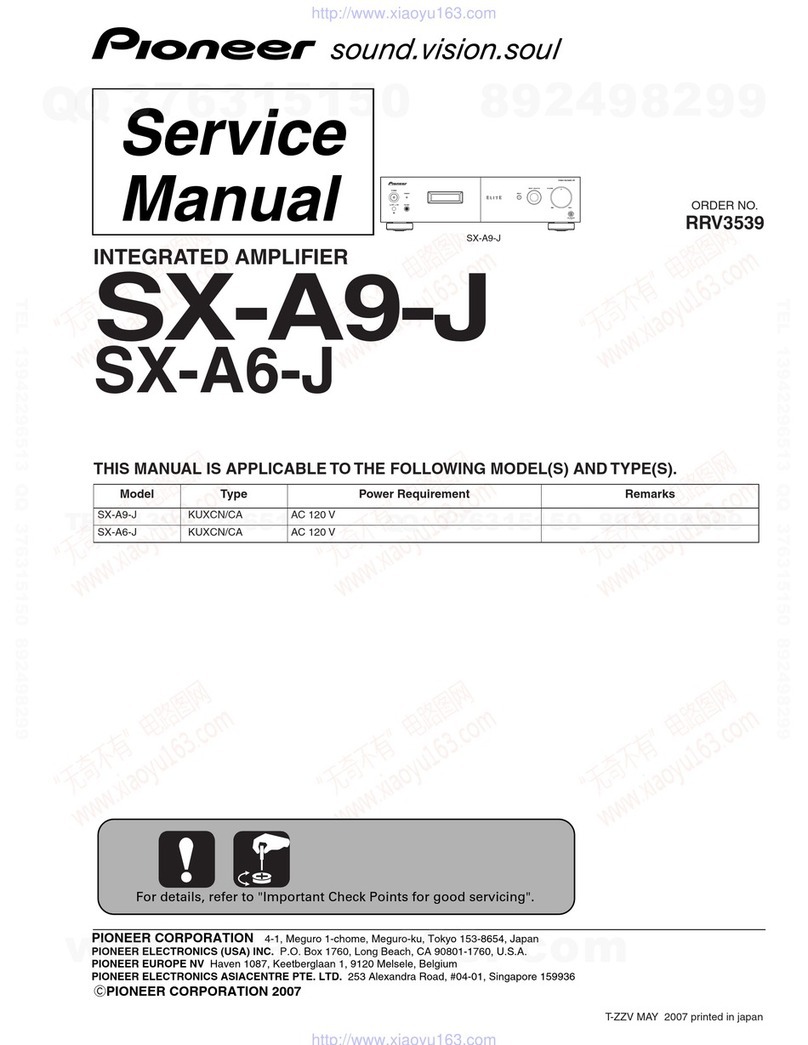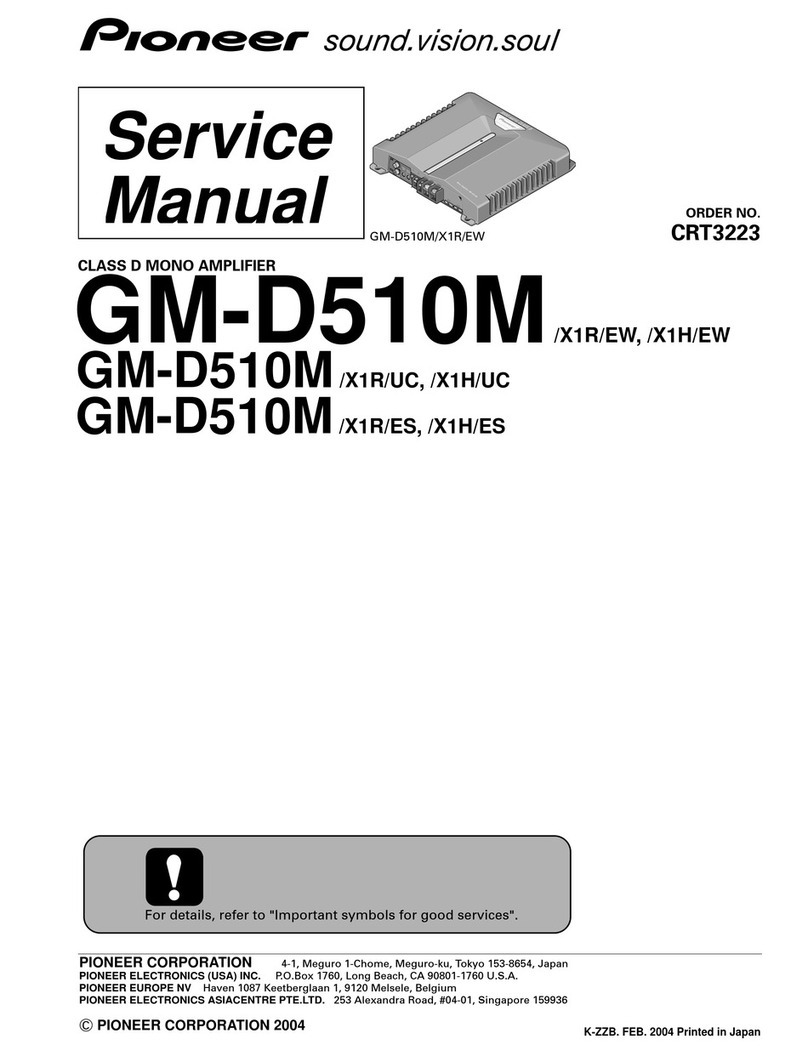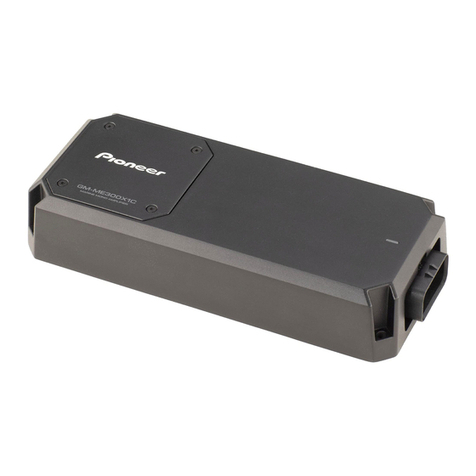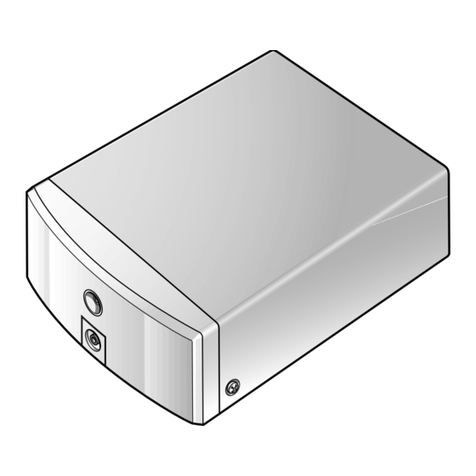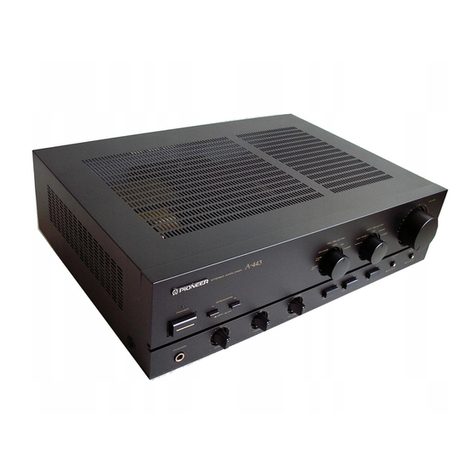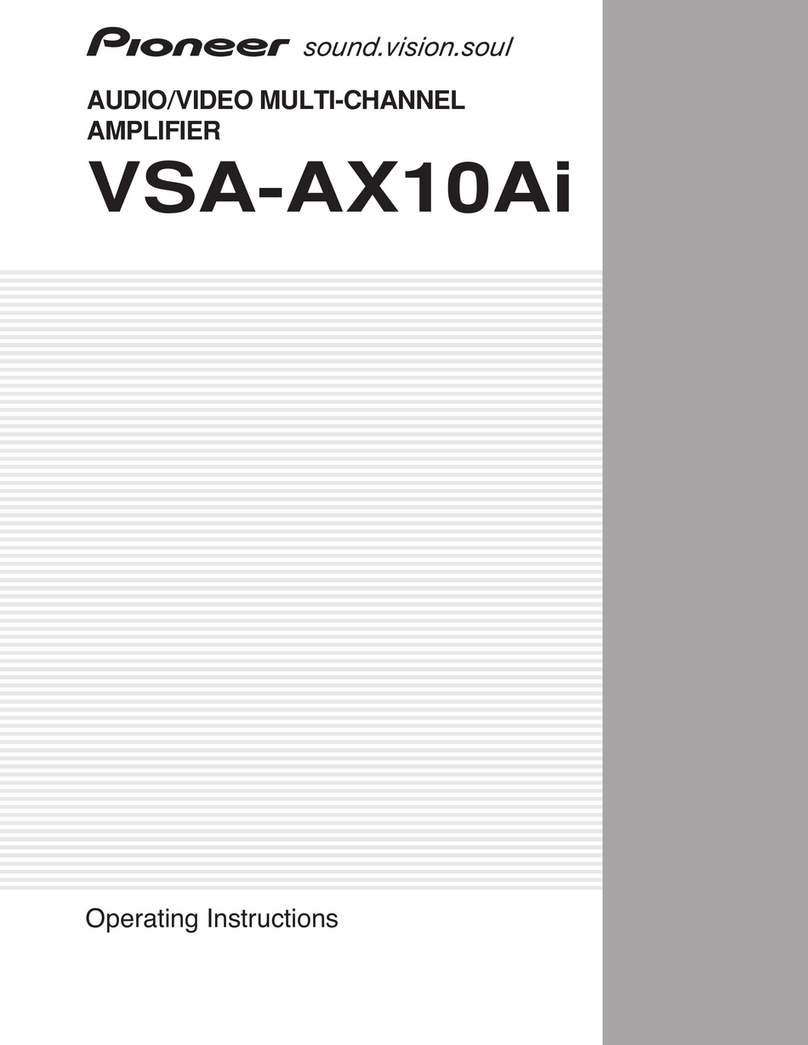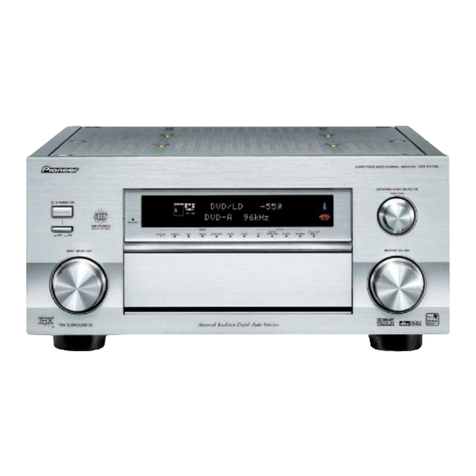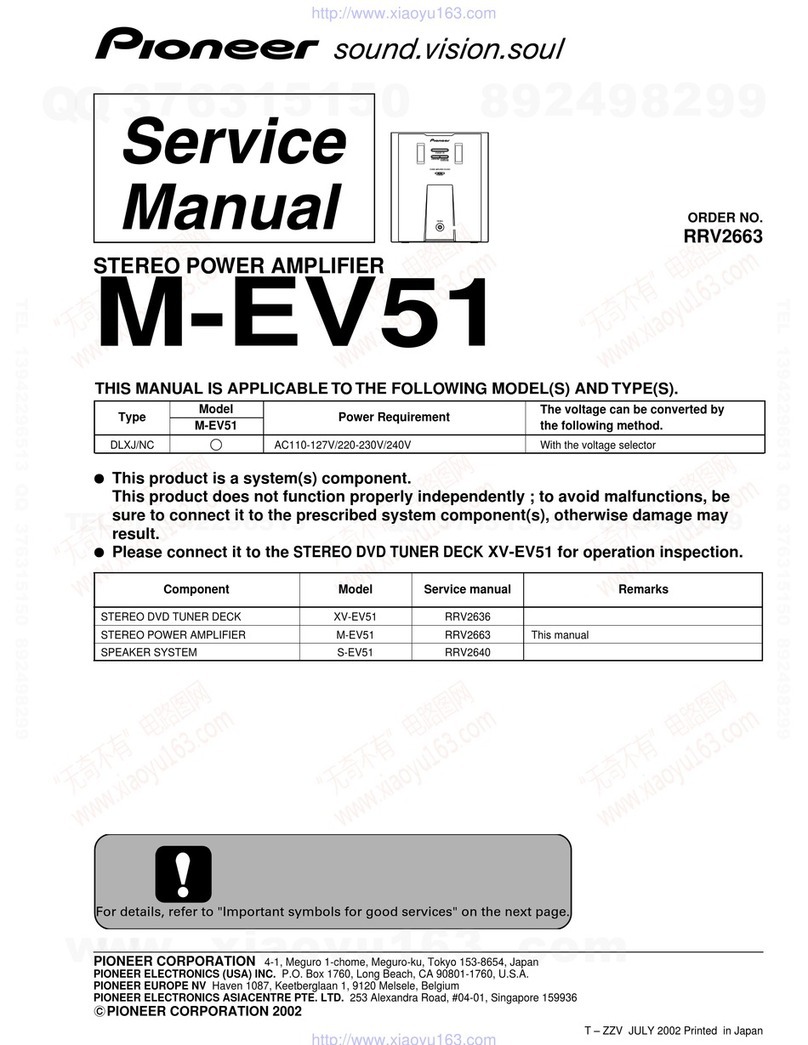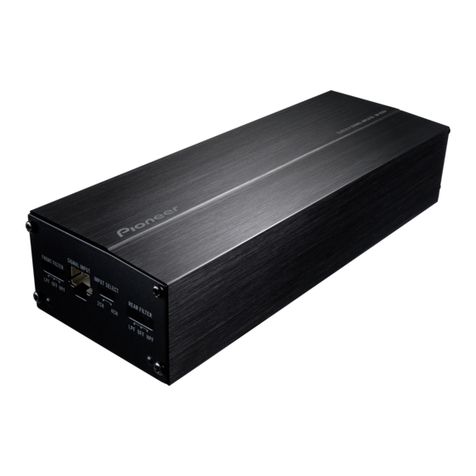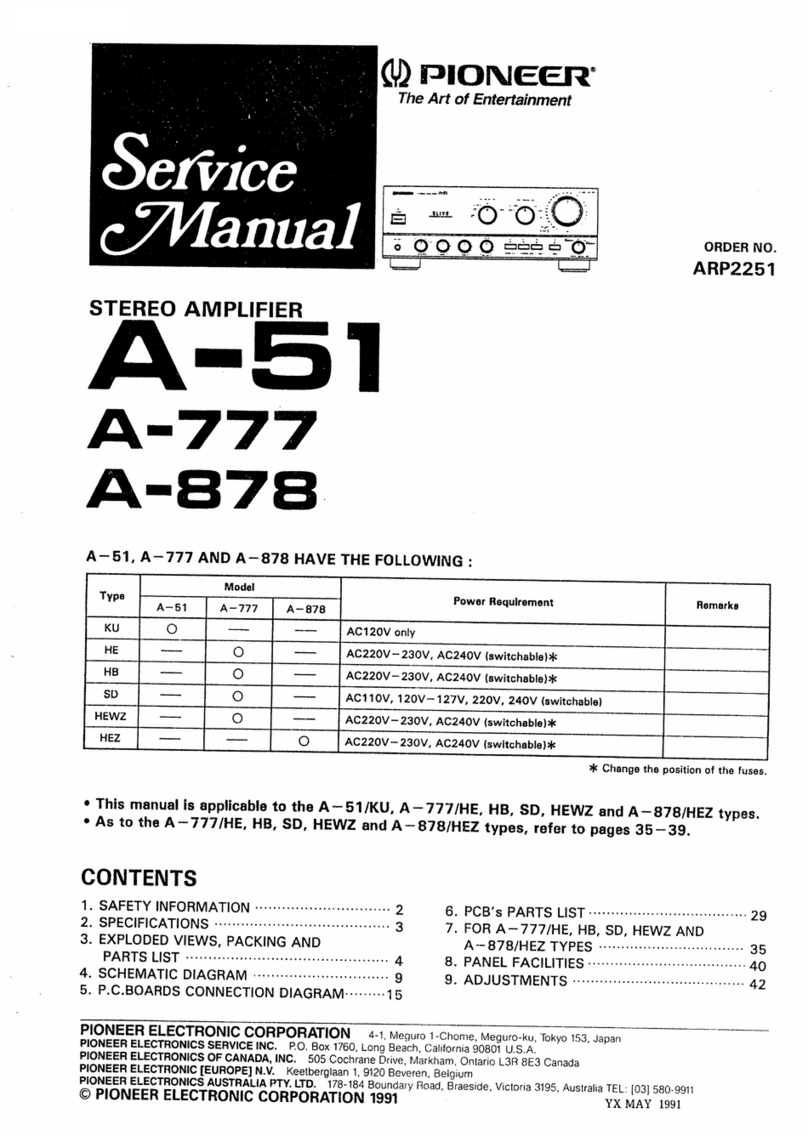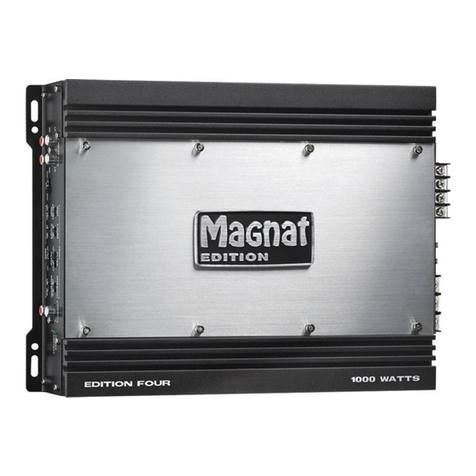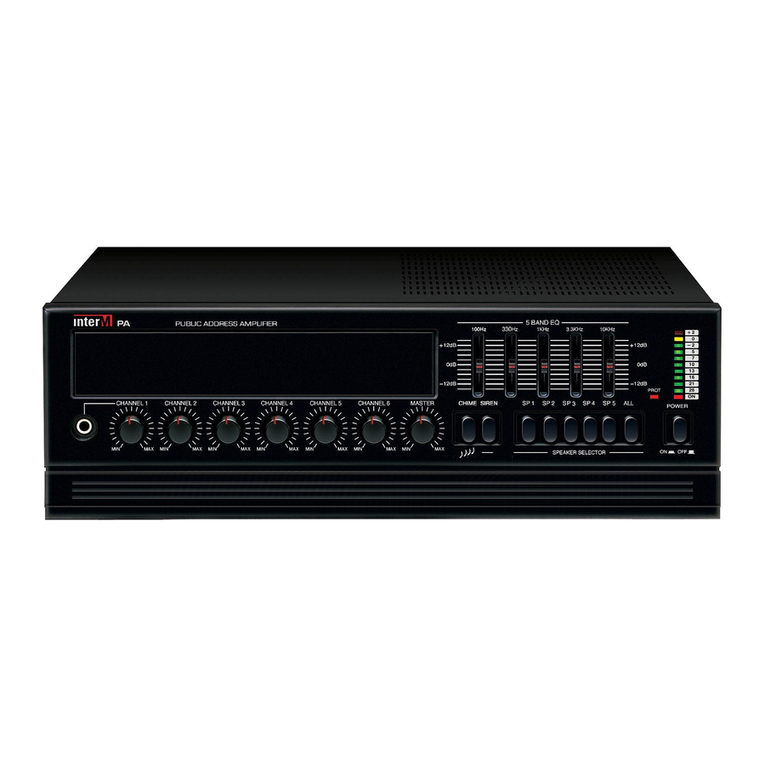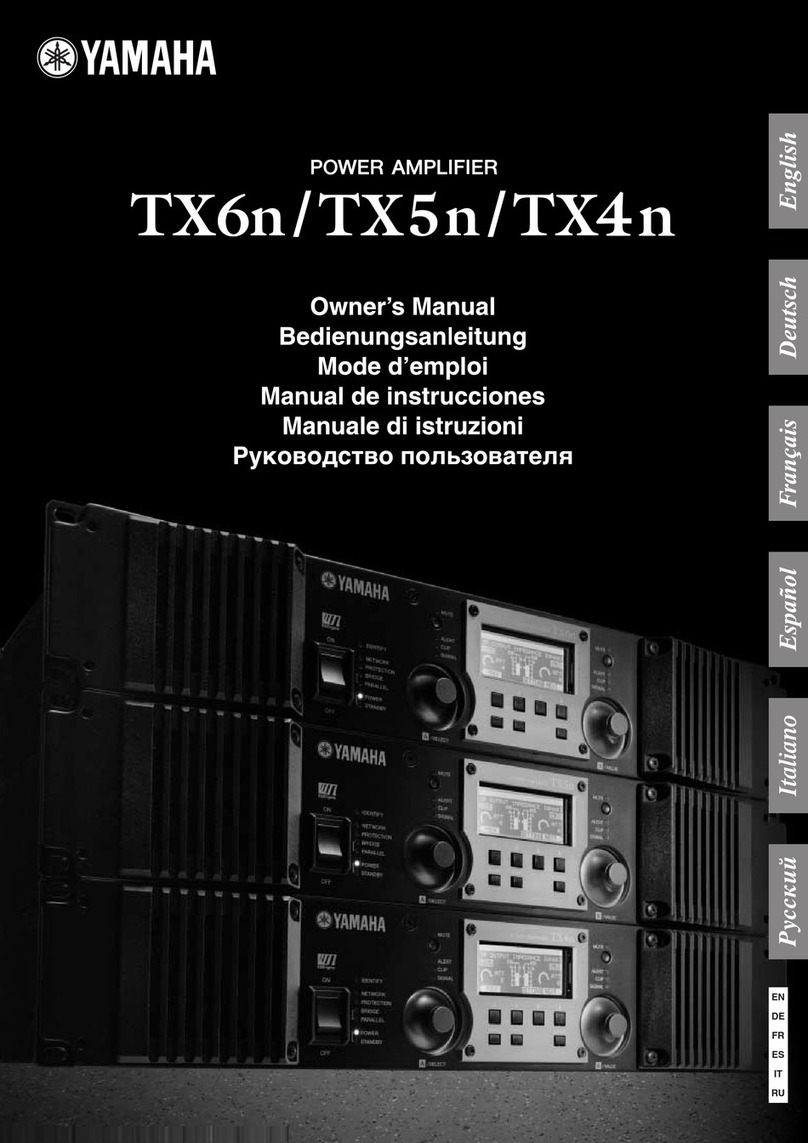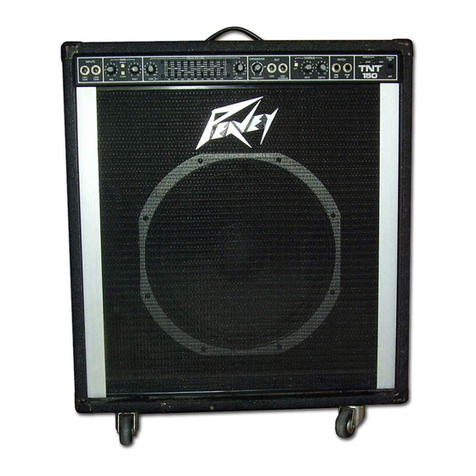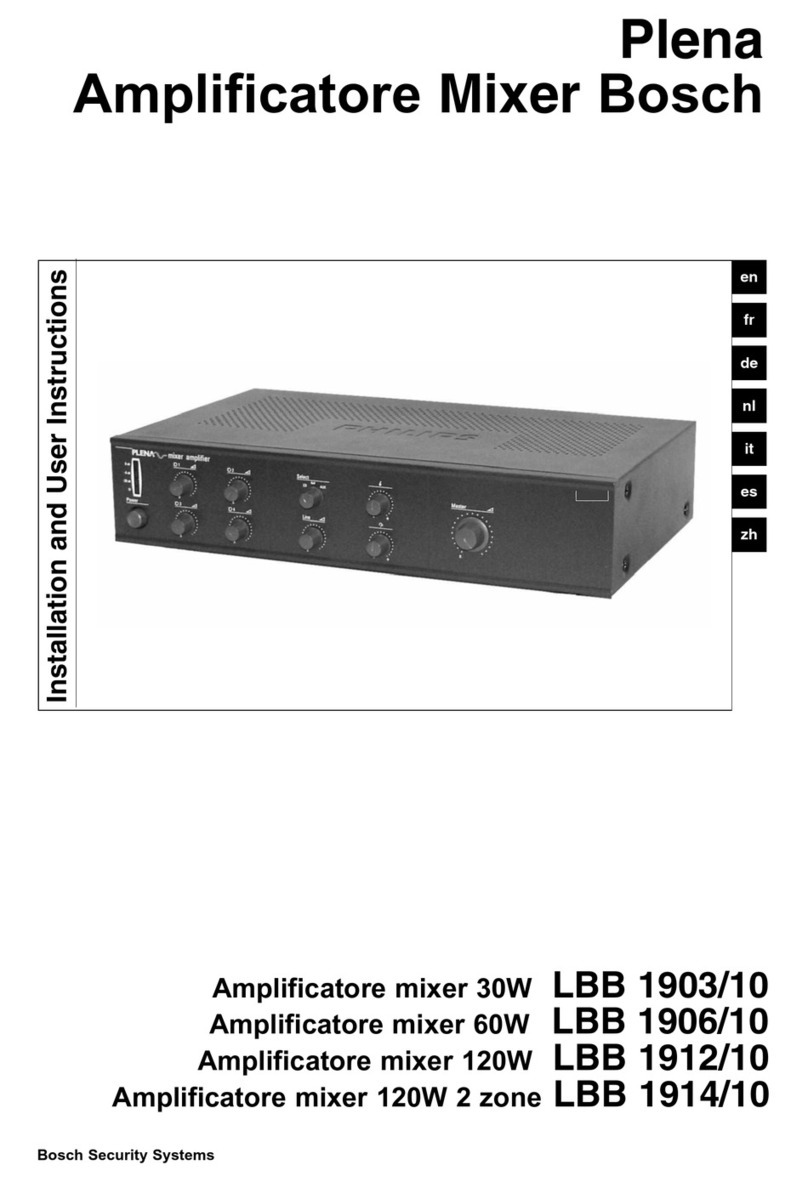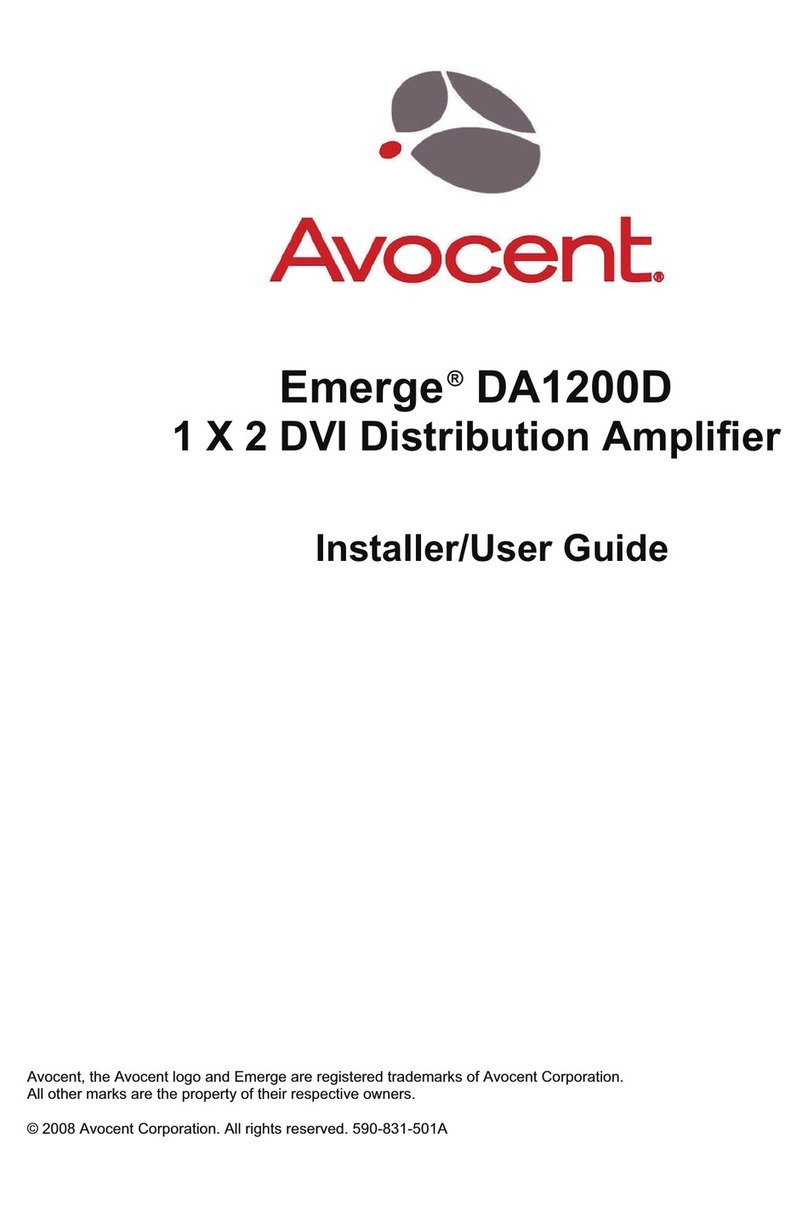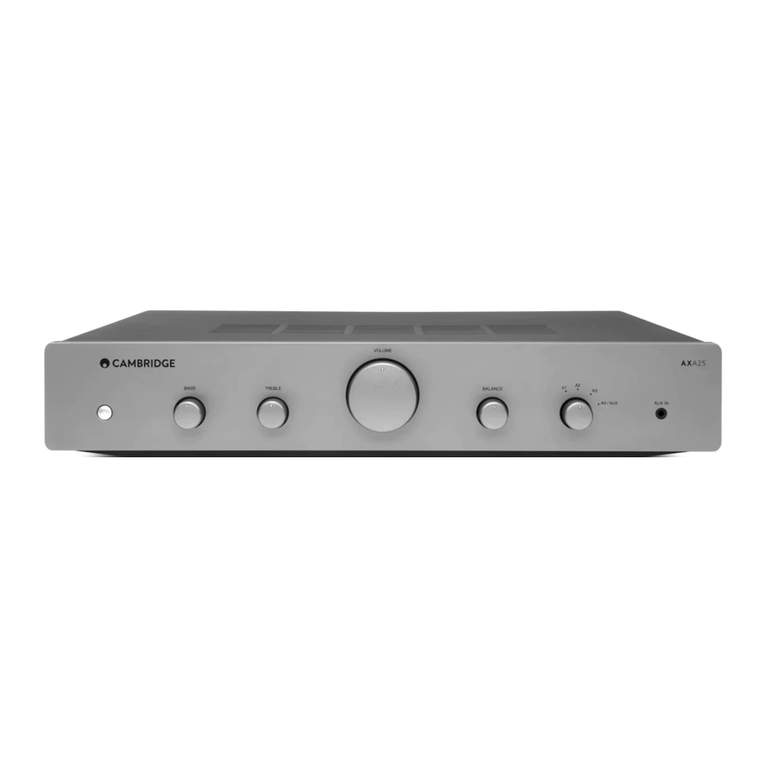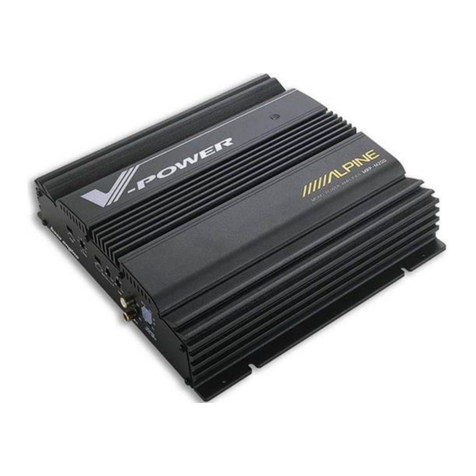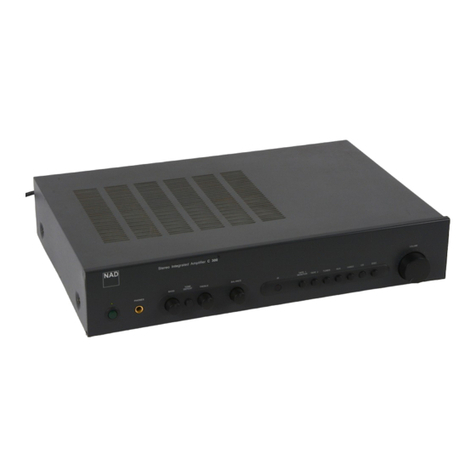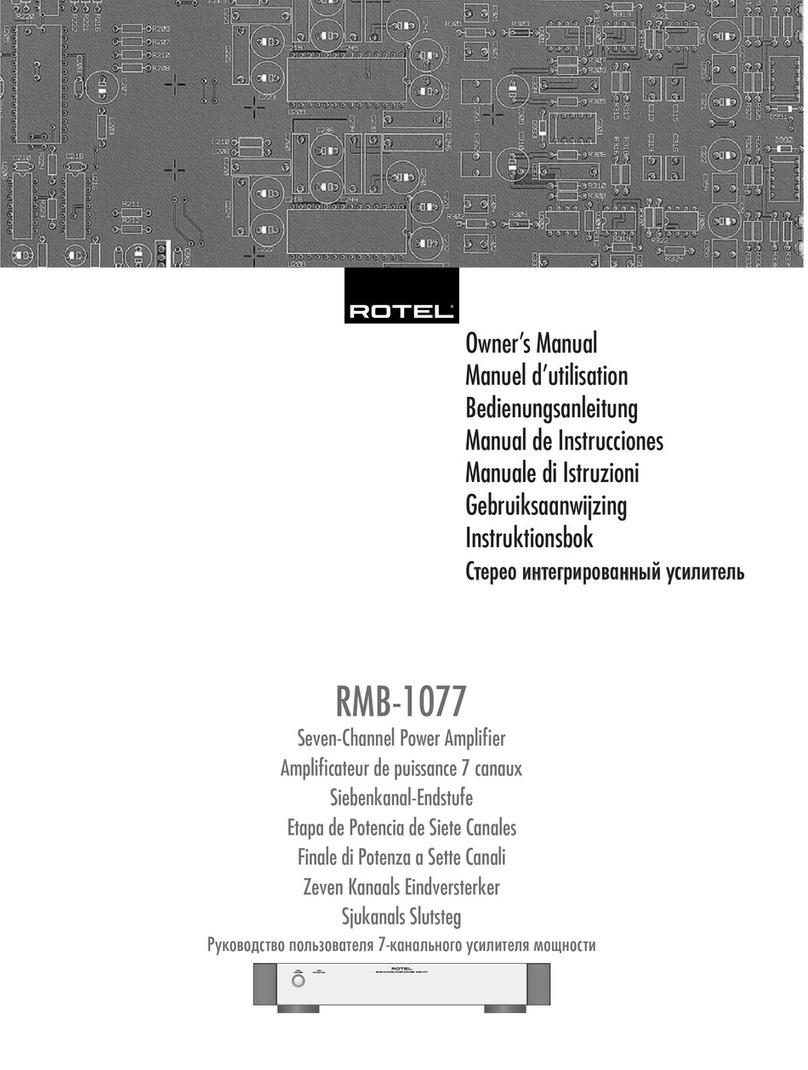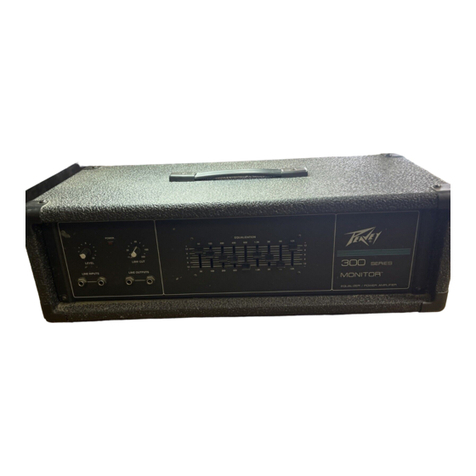
1.
SPECIFICATIONS
Amplifier
Section
Continuous
Power
Output
is
70
watts*
per
channel,
min.
at
8
ohms
from
20
Hertz
to
20,000
Hertz
with
no
more
than
0.007%
total
harmonic
distortion.
Continuous
Power
Output
at
1
kHz
(both
channels
driven)
T.H.D.
0.007%,
Bohms
..............08
78
watts
per
channel
Total
Harmonic
Distortion
(20
Hertz
to
20,000
Hertz,
8
ohms,
from
TUNER)
continuous
rated
power
output
.......
No
more
than
0.007%
35
watts
per
channel
power
output
..
No
more
than
0.005%
Intermodulation
Distortion
(50
Hertz:7,000
Hertz
=
4:1,
8
ohms,
from
TUNER)
continuous
rated
power
output
.......
No
more
than
0.005%
35
watts
per
channel
power
output
..
No
more
than
0.003%
Damping
Factor
(20
Hertz
to
20,000
Hertz,
8
ohms)
cds
shea
heat
crowdba
beleuee
vic
hontes
nes
abies
Pe
GONG
Ga
Rooke
aR
Aeeeee
60
Input
Sensitivity/Impedance
PHONO
MM
........c2cccesceeeceeetereeeeeees
2.5
mV/50
kilohms
PHONO
MC
1...
2.
cee
cceeeenecee
este seen
eens
0.25
mV/100
ohms
TUNER,
AUX,
TAPE
PLAY
1,
2
..........
150
mV/50
kilohms
Phono
Overload
Level
(T.H.D.
0.0015%,
1,000
Hz)
PHONO:MM
icc
ciiesecccsdeesesceetssscsecdssescacsenssessves
200
mV
PHONO'MG:
ccoveceschisendemesssscsvetatacessrsvsniedeeneneres
20
mV
Output
Level
TAPE
REC
12s
te
csssscitiessewudeces
Pavececs
150
mV
Speaker:
is.
cccccsiccevisvetseccbenedes
A/OFF,
B/OFF
(6~16
2)
Frequency
Response
PHONO
MM
(RIAA
Equalization)
Racudileodudtedes
tua
chewtavenchworuas
sate
20
Hz
to
20,000
Hz+0.3
dB
TUNER,
AUX,
TAPE
PLAY
1,
2.....
5
Hz
to
100,000
Hz*$
dB
Tone
Control
BASS
ees
ieecintaiied
cc
dennbaeneconsenehenetenes
tes
+10
dB
(100
Hz)
TREBLE
visdt
sccetvsecaveteetactetcertertenenseueeens
+10
dB
(10
kHz)
Filter
LOW
(SUBSONIC)
........ccceceeeee
eee
eee
es
20
Hz
(6
dB/oct.)
Loudness
Contour
{Volume
control
set
at
—40
dB)
iikiweStion
cee
add
ola
eaew
needed
cee
+9
dB
(100
Hz),
+3
dB
(10
kHz}
Hum
and
Noise
(IHF,
short
circuited
A
network)
PHONO.
MM)
icecczcicetcccstiec
eat
ees
sn.
tea
onde
deegsenane
88
dB
PHONO
MC
oeciceciccescsseceae
ad
obaecsnacssttassactaber
doses
70
dB
TUNER,
AUX,
TAPE
PLAY
1,
2
.......ecceceeeeceee
eee ees
110
dB
Hum
and
Noise
(DIN,
continuous
rated
power
output/50
mW)
PHONO
MM
........cccececscncec
ee
etecenteneneeeneeees
80
dB/66
dB
PHONO!
MGo
tos
vecasecatasegneoedt
atepetotecds
even?
70
dB/65
dB
TUNER,
AUX,
TAPE
PLAY
1,
2...............0085
95
dB/69
dB
Mini
sees
dedeszsea
teceenueseessteueaeset
vee
ccisebspniedenvevesicdons
—20
dB
Miscellaneous
Power
Requirements
HE,
HB
model
..............
220/240
V
(switchable),
50/60
Hz
Power
Consumption
HE,
HB
models
..............cccccecsesececeeeecsenes
420
W
(max.)
Dimensions
...........0.cseseeeeee
420
(W)
x
132
(H)
x
423
(D)
mm
16-9/16
(W)
x
5-3/16
(H)
x
16-11/16
(D)
in
Weight
(without
package)
................66-
12.2
kg
(26
Ib
14
oz)
Furnished
Parts
Operating
Instructions
............0cceeeeeu
eee
1
(HE
mode!
only;
2)
*Measured
pursuant
to
the
Federal
Trade
Commission’s
Trade
Regulation
rule
on
Power
Output
Claims
for
Amplifiers.
NOTE:
Specifications
and
the
design
subject
to
possible
mofifications
without
notice
due
to
improvements.
